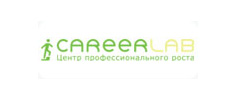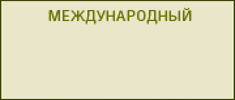List articles
|
The article analyzes the post-crisis recovery of the Dutch economy’s competitiveness. The author
supposes that for the Netherlands as a small country, the decisive factor of national competitiveness
is reasonable use of competitive advantages in the export strategy. The study was carried out in two
stages: first, a series of general macroeconomic parameters of the Dutch economy were analyzed
as the basis of the country’s economic strength; second, the country’s export activity is explored as a
guarantee of the economy’s efficiency. A comparison is made between the sectoral indicators of the
Dutch national competitiveness and the structure of the country’s exports. It is concluded that there
is no direct correlation between the level of relative competitiveness and export-orientation of one
or another sector of the Dutch economy. The basis for the economic success of the Netherlands in
recent years is exports diversification, as well as the uniform development of industries and reliance
on the traditional spheres of economic activity. The Netherlands, by its example, demonstrates that
successful trade in foreign markets by categories of goods and services that are not relatively competitive
can maintain equilibrium, stability and independence of the economy from external shocks.
Continue...
|
|
|
The paper analyzes the strategic planning documents of the Russian Federation, containing indicators
of export competitiveness. Grouped indicators recommended by the World Bank. The factors
of export competitiveness are determined, the change of which may affect the value of the estimated
indicators. The significance of the influence of factors of export competitiveness on the indicators
stipulated by the Russian strategic documents and international organizations is evaluated.
We use dialectical methods of knowledge. Analysis — allows you to compare regulatory legal and
advisory documents reflecting indicators of export competitiveness. The analysis also provides for
the selection from the entire set of factors of export competitiveness that influence the change in the
estimated indicators. Synthesis provides a systematization of indicators of export competitiveness
and factors affecting it. Induction — contributes to the development of recommendations for the
refinement of indicators contained in strategic documents. Results. The conclusions and proposals
formulated in the article can be used by legislative and executive authorities in assessing export
competitiveness and making changes to strategic planning documents. Significance. The results of
the work determine further directions for improving the state policy in the development of Russian
exports and increasing the attractiveness of the national economy in world markets.
Continue...
|
|
|
Results of a set of researches in the field of strategic management are given in scientific literature.
In each of these researches the ideas of a concept of competitiveness, methods of its increase
and maintenance at the high level are given. This area of researches is very relevant as still there
is no uniform and commonly accepted theory of competitiveness, and at the expense of as far as
the enterprise will be competitive, its success and success of the products which are turned out at
it depends. In this work own vision of a concept of competitiveness as integrated concept is given,
the analysis of some classifications of the strategy offered by various researchers is carried out. Also
the analysis of problems most of which the knowledge-intensive enterprises should test in Russia
is carried out. In this article the specifics of development of the enterprises of the domestic nuclear
industry within the Rosatom state corporation (SC) which need to compete successfully among
themselves in one group of companies so that as a result of group of companies became competitive
in the world are considered. An objective of this research began to understand on the basis of
the done analysis on what way the knowledge-intensive enterprises of the domestic nuclear industry
need to move for successful development as within the country, and beyond its limits and also to
understand what has to become a basis of such development.
Continue...
|
|
|
The article is devoted to the problem of studying the concept of competitive competences, and
its application to top and middle managers of the university. The broad and narrow approaches in
determining the content of the concept of competitive competencies are described. The author
emphasizes the theoretical difference between the competitive competence of the organization and
the competitive competences of the individual. Competitive competence of the organization are disclosed
in the framework of the resource base view to the firm. Individual competitive competences
are disclosed in the framework of the competence-based approach to HR-management. As applied
to the competence model of higher and middle managers of higher education institutions, there is
the structuring of competences into universal, general professional, professional and special professional
competencies.
Continue...
|
|
|
The effects of national antitrust are studied in a global context based on modeling trade between two
countries with a strict specialization in the production of goods. An equilibrium is explained in terms
of the choice of the competition protection mode for the case of lack of coordination in law enforcement,
on the basis of the accepted assumptions regarding the incentives of the national antimonopoly
authorities to act in order to maximize the total welfare on the internal market. This equilibrium entails
a case in which national antimonopoly authorities choose to fight only those infringements that lead to
negative effects for internal markets and avoid fighting infringements by national companies on export
markets. The Pareto-improvement conditions as a result of the adjustment of the competition protection
regime at the supranational level are explained, and the boundary conditions for the supranational
antitrust in terms of cartel deterrence are identified. The results obtained allow us to demonstrate the
sources of obstacles to the formation of a coherent competition policy at the supranational level and to
find the conditions under which these obstacles can be overcome. Symmetrical extraterritoriality may
be one of the options for providing Pareto improvements, but the costs and ways of its implementation
will play a key role in evaluating the efficiency of such a solution.
Continue...
|
|
|
In article the competitive factor of structural modernization of the Russian economy is considered.
Trends and problems of the competition and the competitive environment are analysed. Special
attention is paid to the National development plan for the competition for 2018–2020 as to modern
institute of public administration by structural priorities. Analytical assessment of the impact of the
competition on structural processes and indicators of macrodynamics is given. On the basis of use
of a wide range of domestic and world theoretical and empirical literature the bibliographic analysis
of influence of the competition on economic growth is carried out. Characteristic of level of the competition
on the basis of polls of heads of the enterprises is presented. The main results about ranks
of the indicators and processes characterizing summary results of the competition and competitiveness
of economic dynamics according to results of the WEF during the period from 2014 to 2018 are
designated. Separate aspects of activity of the state and FAS Russia as institutes of competition and
structural shifts are disclosed. Work is illustrated a number of statistical calculations.
Continue...
|



